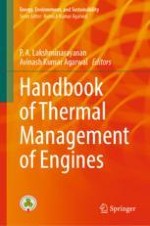2022 | OriginalPaper | Buchkapitel
6. Diesel Engine Throttling—The Classical Tool: To Adapt Exhaust Gas Temperature for Emission Control by Catalysts and Filters: From Its Beginning to the State of the Art in Euro 6/VI
verfasst von : A. Mayer, A. Amstutz, L. Guzzella, Y. Hohl, F. Jaussi, S. Kany, Chr. Lämmle, F. Legerer, Th. Lutz, P. Nöthiger, M. Wyser, H. Stieglbauer, J. Czerwinski
Erschienen in: Handbook of Thermal Management of Engines
Verlag: Springer Singapore
Aktivieren Sie unsere intelligente Suche, um passende Fachinhalte oder Patente zu finden.
Wählen Sie Textabschnitte aus um mit Künstlicher Intelligenz passenden Patente zu finden. powered by
Markieren Sie Textabschnitte, um KI-gestützt weitere passende Inhalte zu finden. powered by
